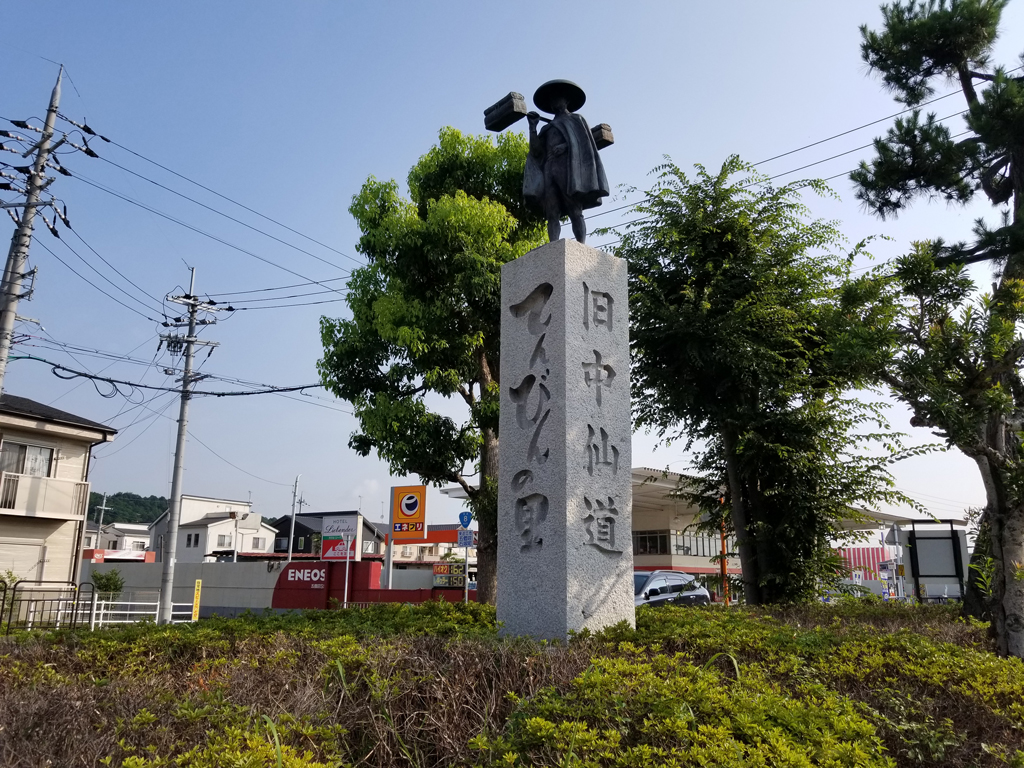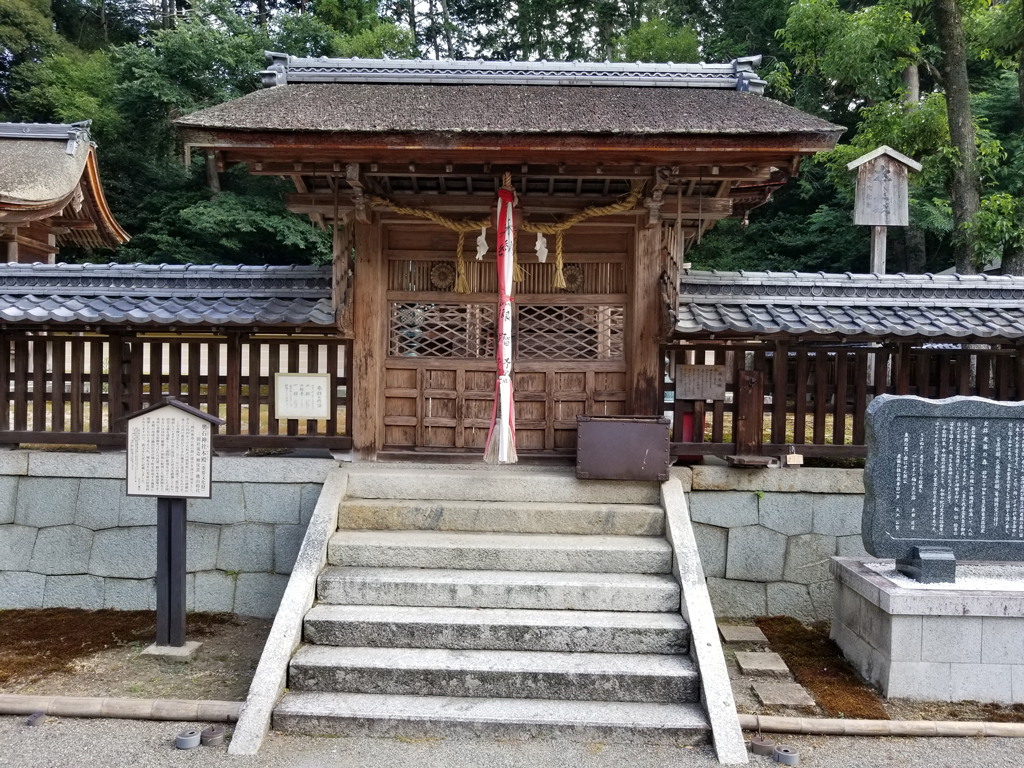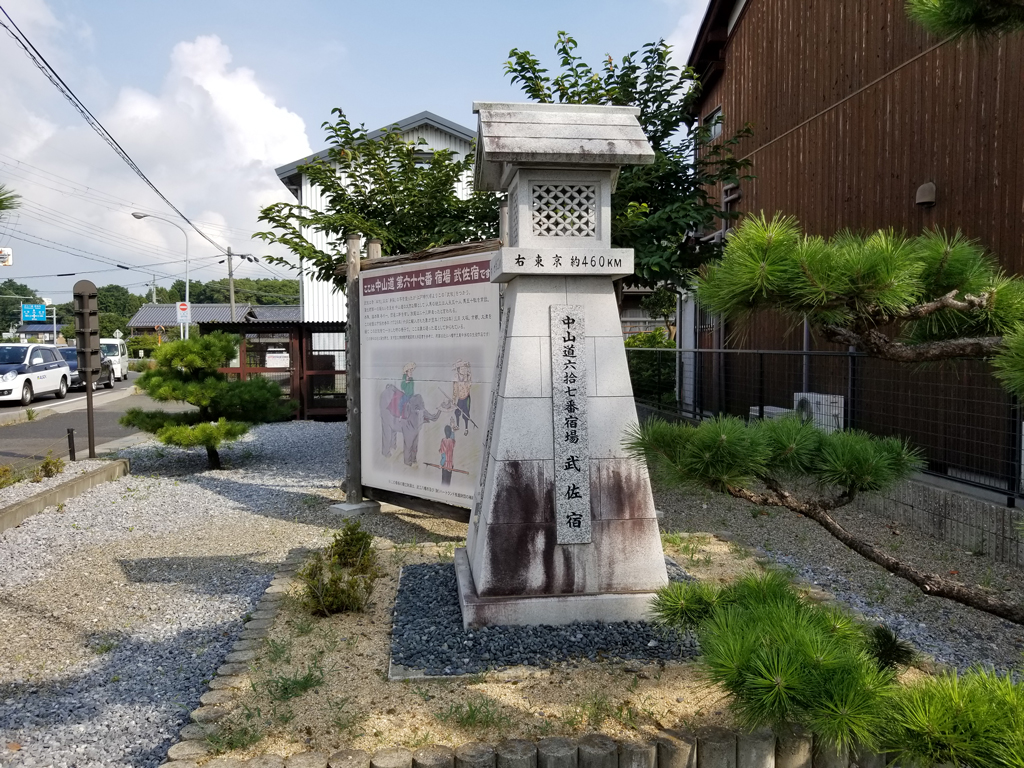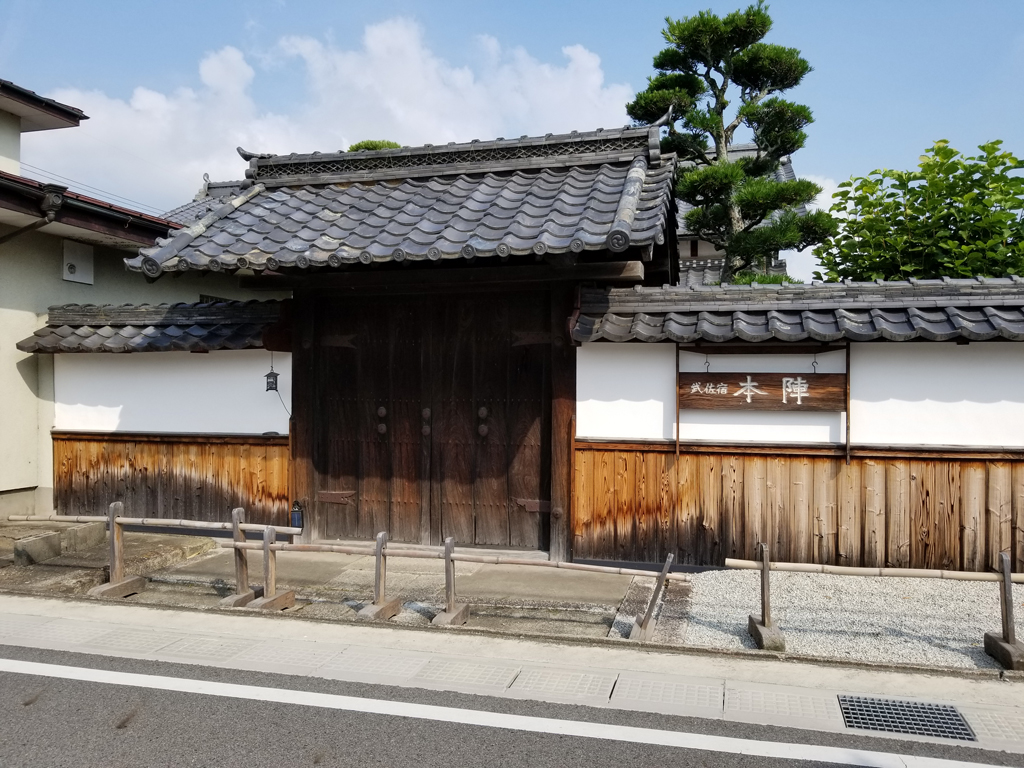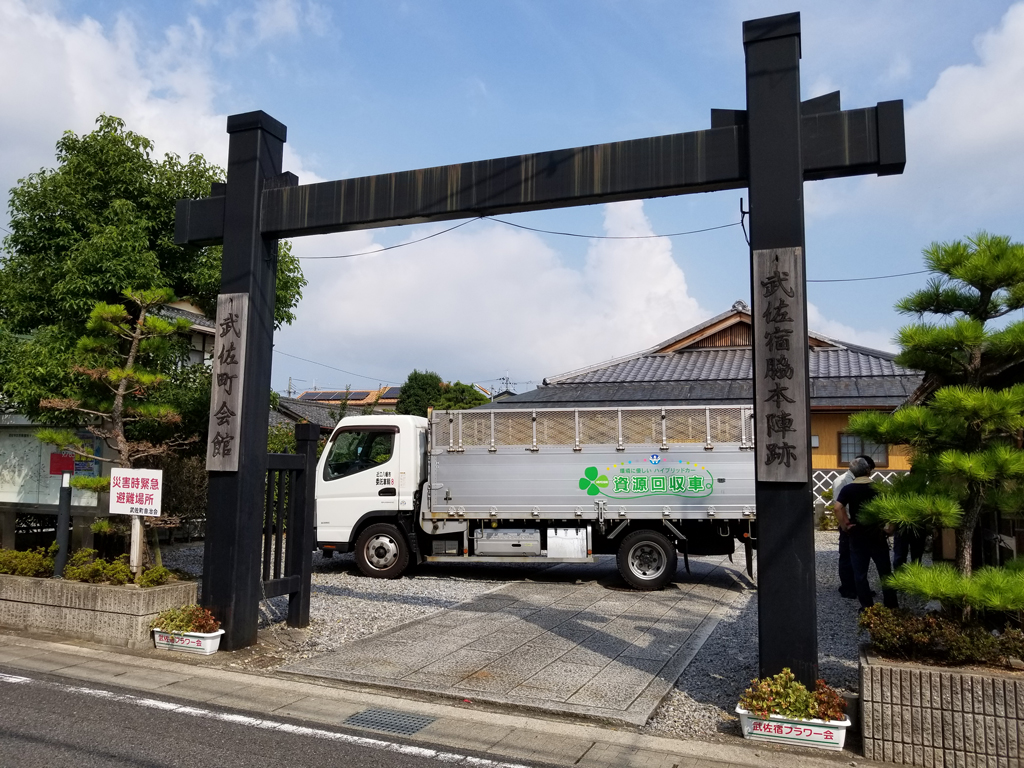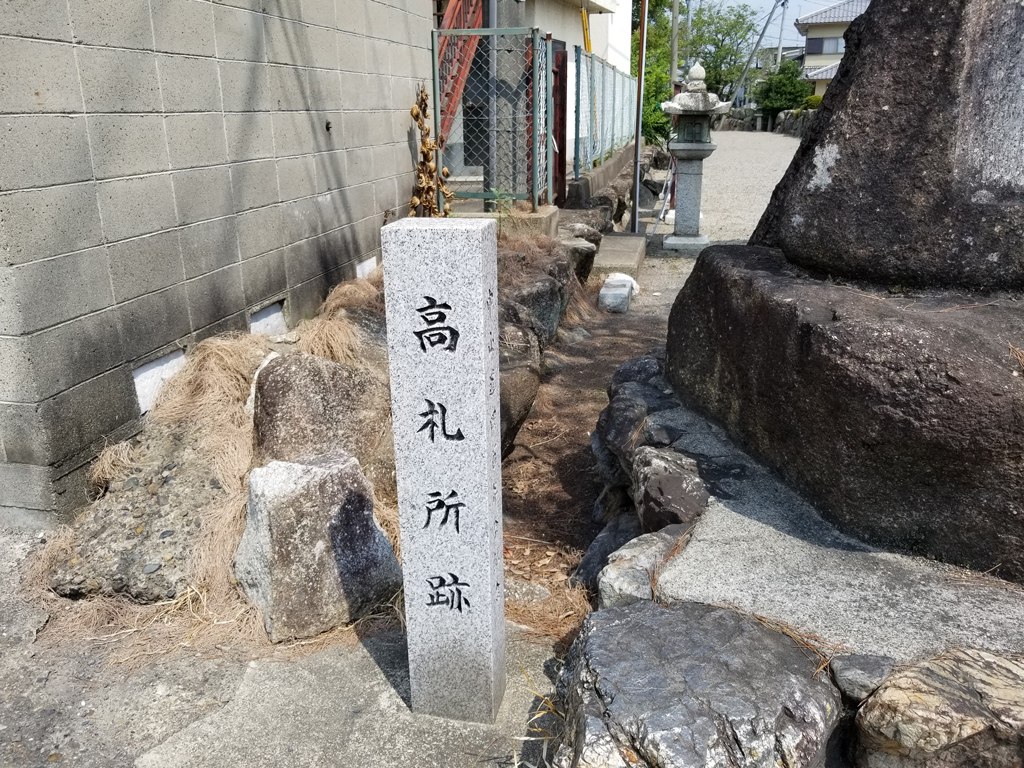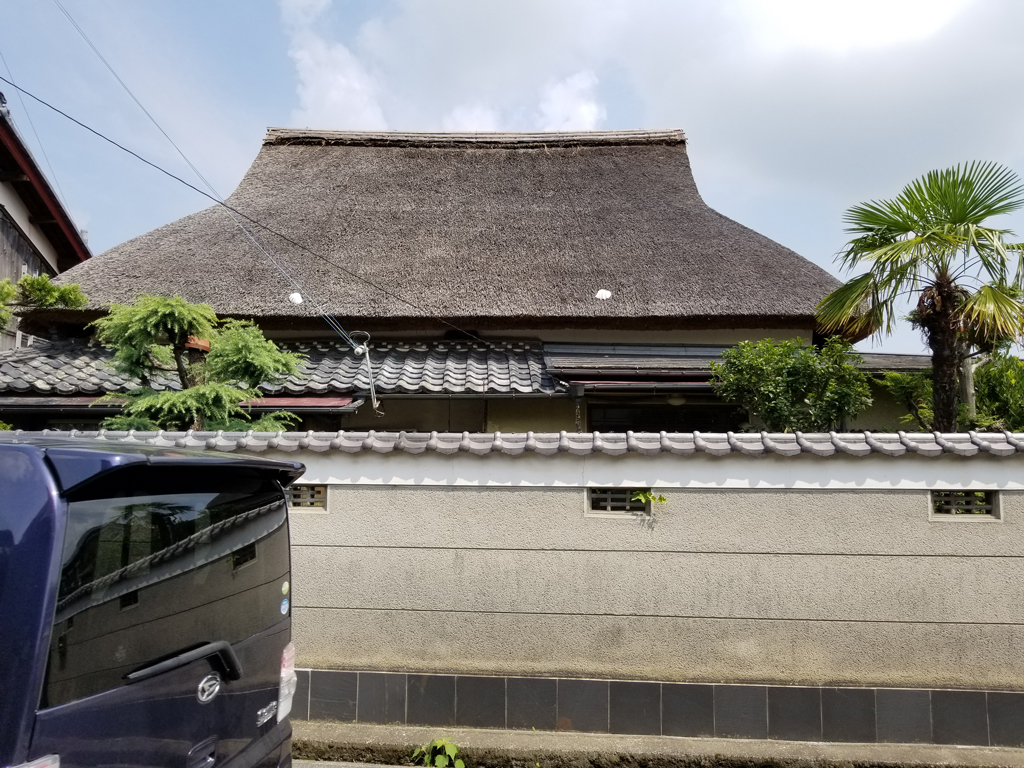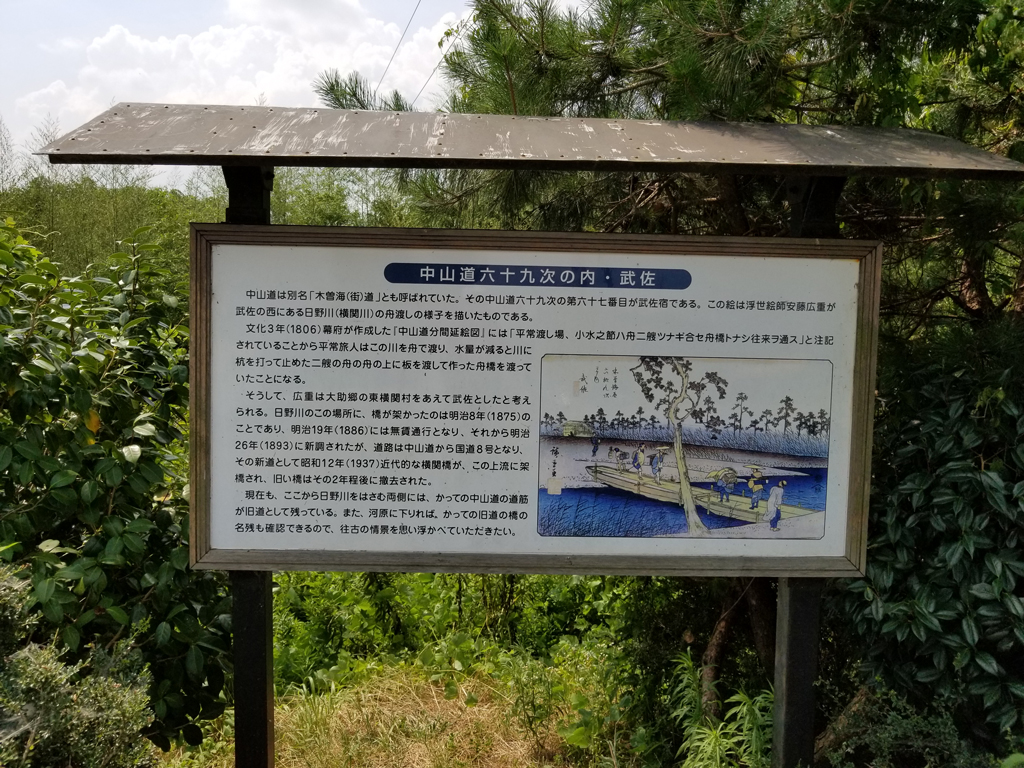- The Musa-juku
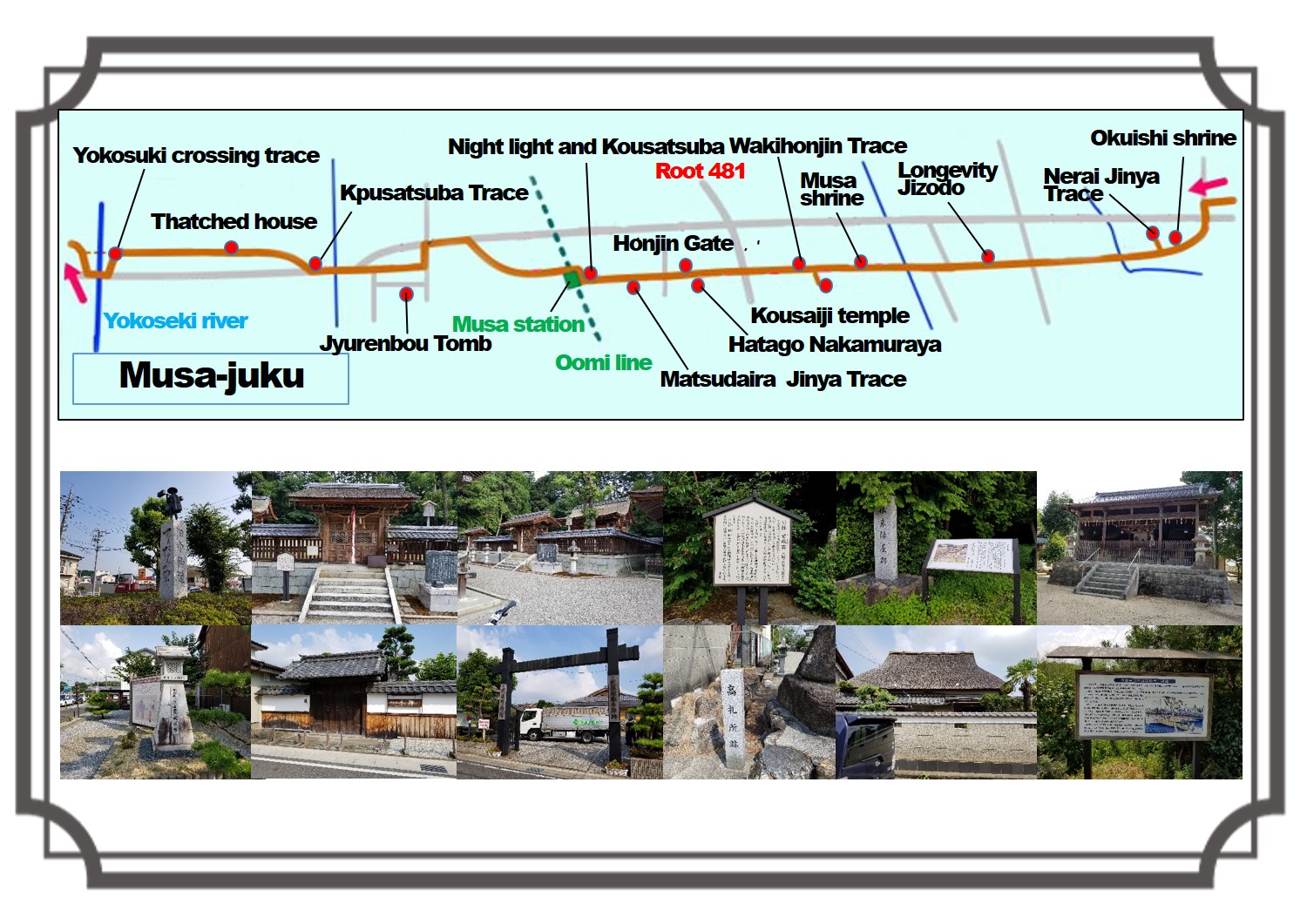
The Musa-juku is elongated about 890 m to the east and west,, and is a lodging place filled with seafood, cloth, paper and other materials. The Musa-juku was located approximately 9.8 km from the Echigawa-juku. The town had a population of 537 (man 272、woman 265), 183 houses, one honjin, one waki-honjin, and 23 hatago in the year 1843. Tenbin no Sato mean "Omi merchant" who has grown from a personal merchant to a large merchant by going around Japan all the way with an elephant stick as a shoulder
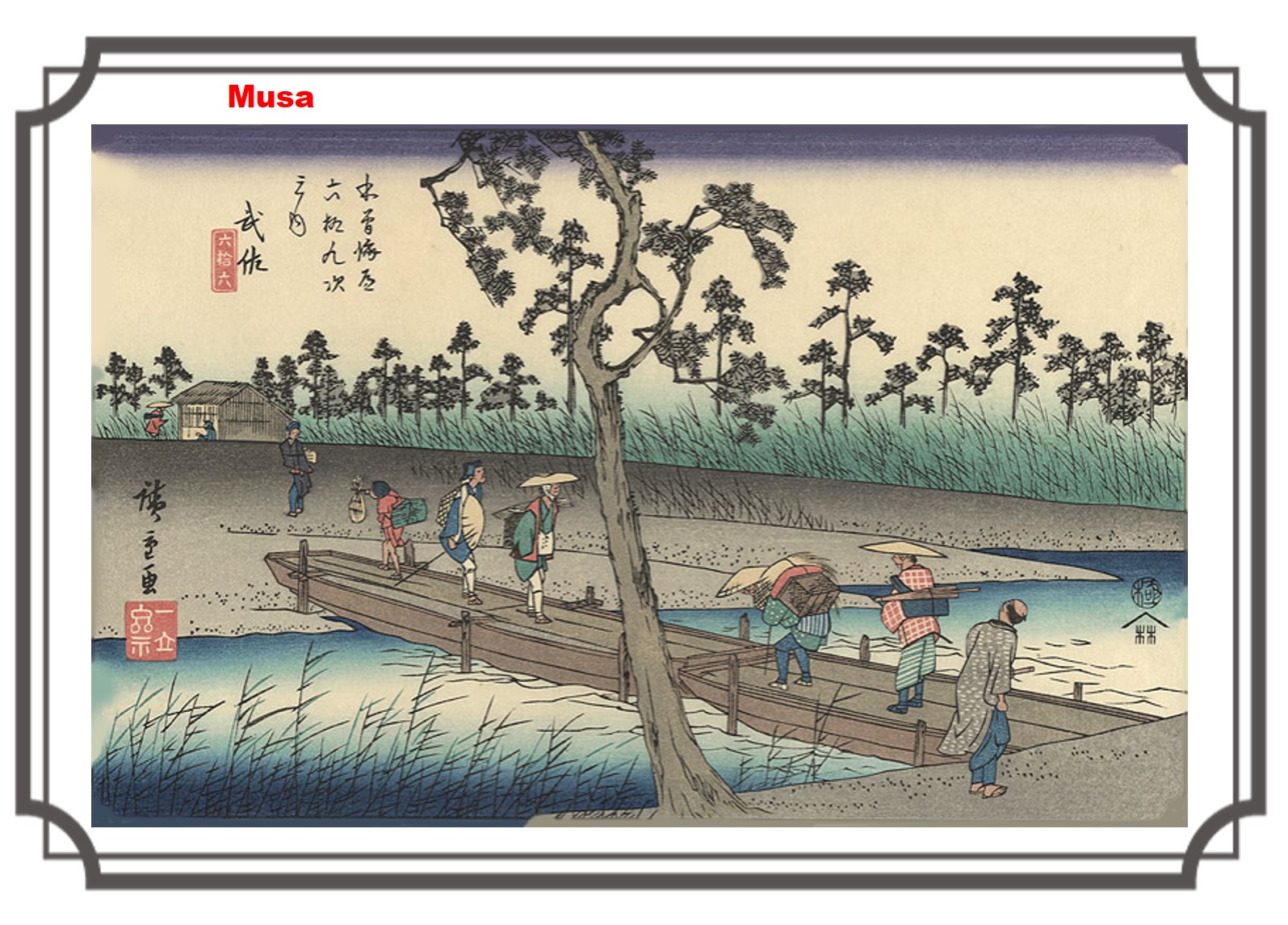
There was a passing place of the Hino River. Although it crossed in the boat in peacetime, when the amount of water decreased, it laid a board in a 2 boat that stopped with a pile, made a bridge, handed over a traveler.

